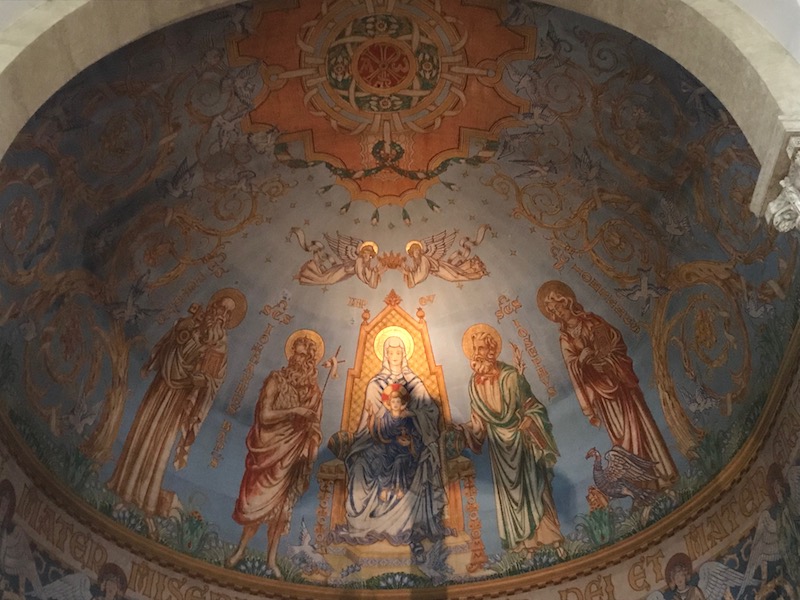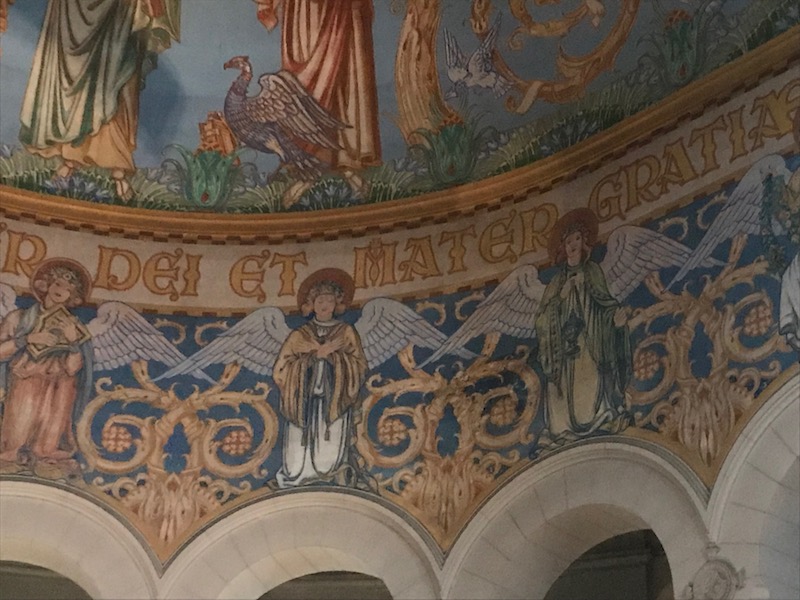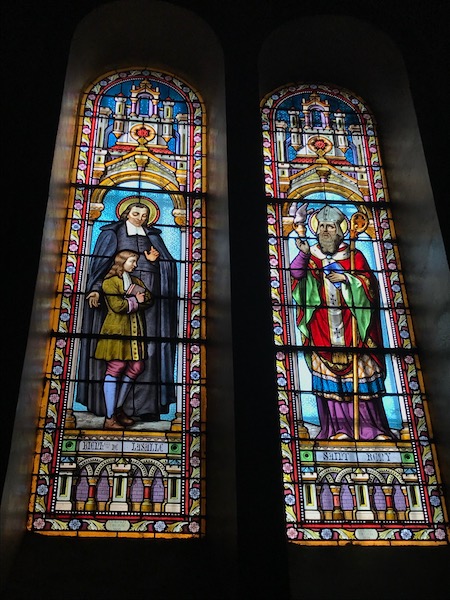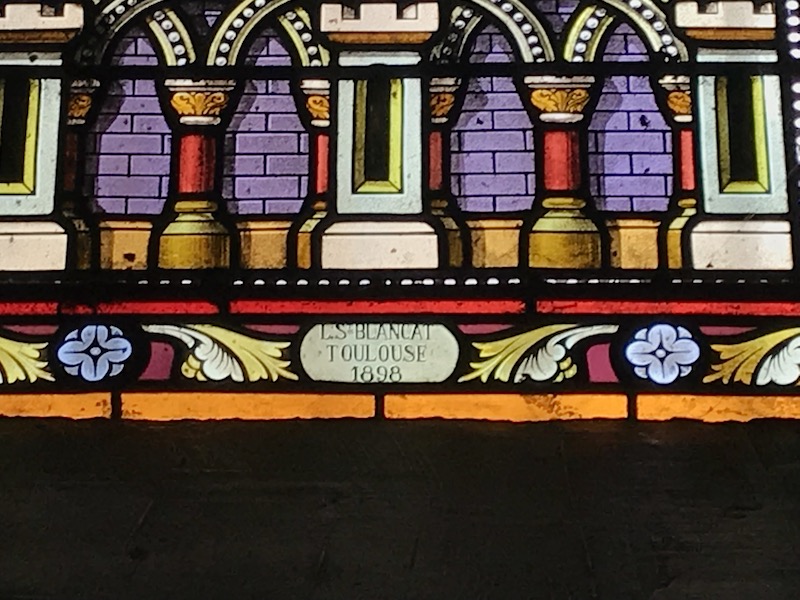Our Blog - Revel, France
May 8th and yet another holiday in France! Today is Victory in Europe Day, generally known as VE Day, and it marks the formal acceptance of the unconditional surrender of Germany to the Allied forces ending WW II. Not as big as May 1st, but still a holiday. We figured today was not a golf day since everybody who was on holiday would want to be playing golf (although not particularly great weather, either). So we decided to do a road trip! Mind you, there was a good probability that many shops and restaurants would be closed, although we thought that most of the museums and tourist-type things would be open (and we found that we were a bit incorrect in that assumption).
We picked two towns that were close together and about an hour from Toulouse. The first was Revel, a town of about 10,000 people who call themselves Revélois (men) and Revéloises (women). Revel is situated at the lower edge of the Massif Central, at the foot of the Black Mountain. The Black Mountain is known in Toulouse as it is where the Canal du Midi, which runs through Toulouse, starts. People were living in the area in the 6th century, and the town itself was founded in 1342 by King Philippe VI of Valois. It was a fortified city, with city walls erected in 1355 with 4 gates, each heading to a major neighboring town (Toulouse, Castres, Sorèze, and Carcassonne). The walls were removed and replaced by a road which encircles the main part of the town. Inside of this circle, the roads were laid out in a grid pattern (although a small grid) such that each of the parcels of land was the same size.
The city is laid out around a central "halle" or market. In Revel, this is an open but covered market. You can see the really nice wood covering over the market square, where they still have a market every Saturday. It is topped by a little bell tower. Supposedly, it originally had a little prison on top which was demolished and replaced in 1830 by the bell tower.
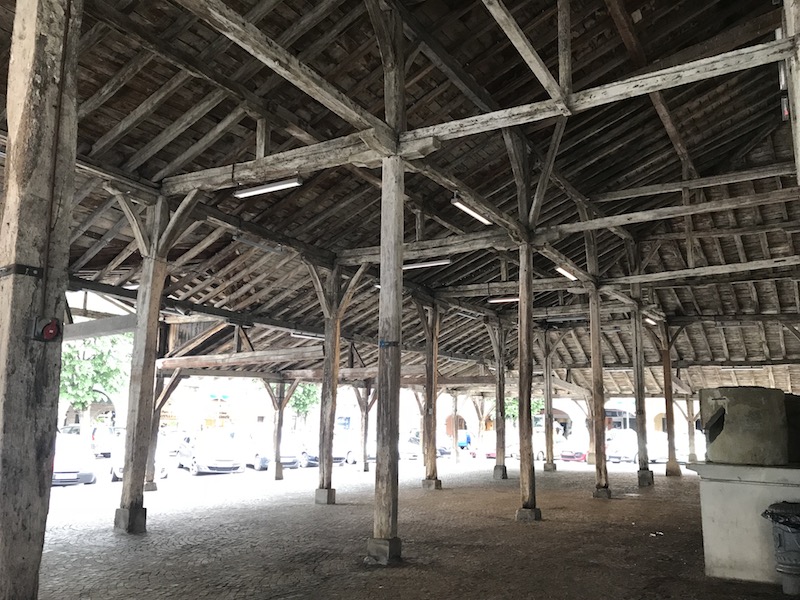
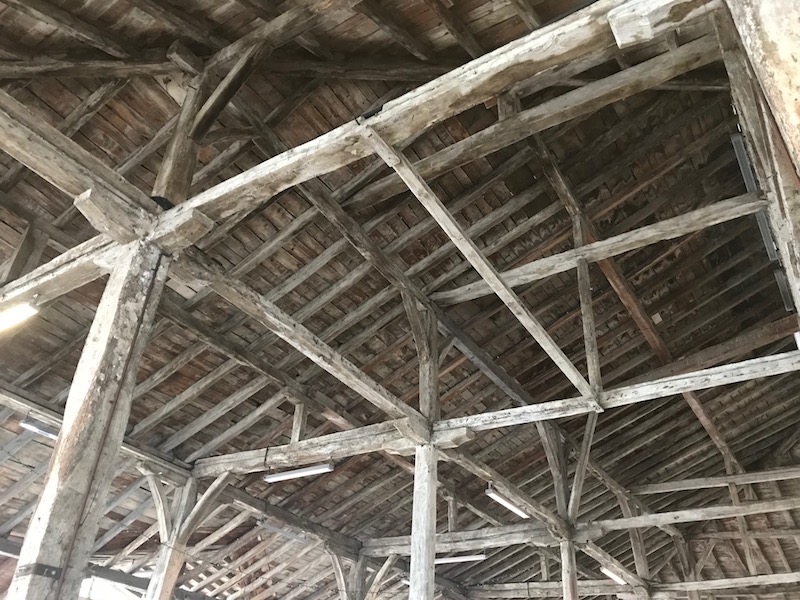
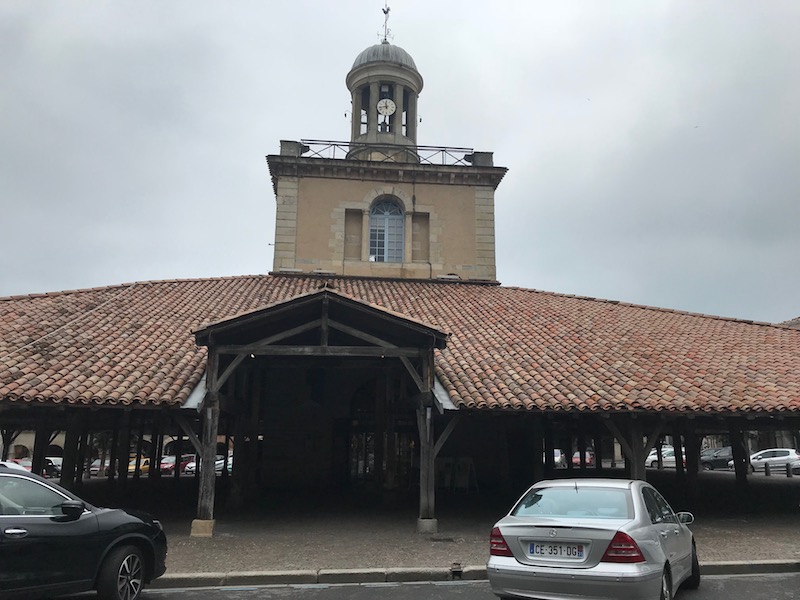
All around the square are well-kept old houses on top of galleries/arcades that line the square with shops, restaurants, and cafes.
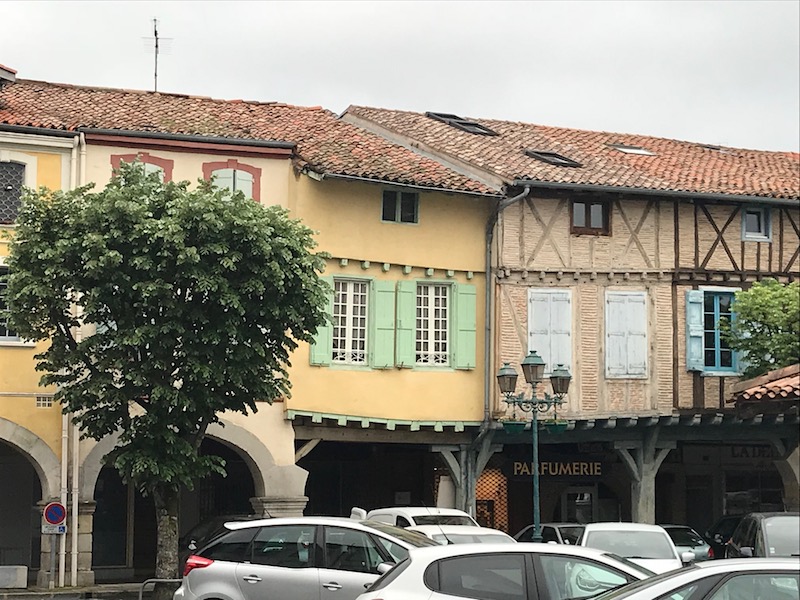

These are very old grain measures that were used until 1837 when the metric system was adopted. They were supposed to be demolished (based on a vote of the Municipal Council), but despite this decision, they have been found intact.

This is the Fountain of the Three Graces, which was built in 1877 at the place of the former Gate in the city walls that led to the town of Castres. The Graces, also known as the Charities, are minor Greek goddesses for charm, beauty, nature, creativity, and fertility. Normally they include Aglaea ("Splendor"), Euphrosyne ("Mirth"), and Thalia ("Good Cheer"). Interesting tidbit: the basin of the fountain was used for animals, which you can see in the old picture.
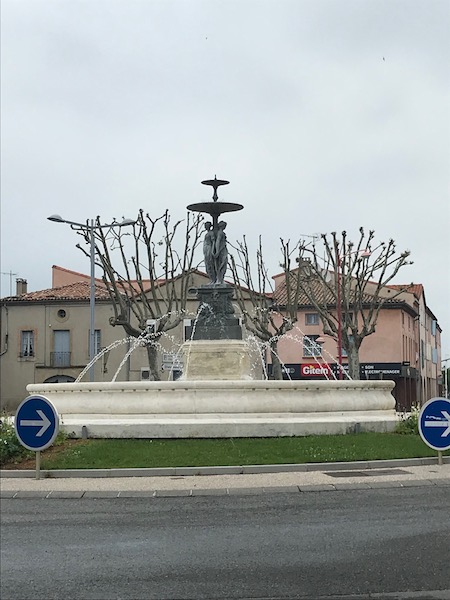
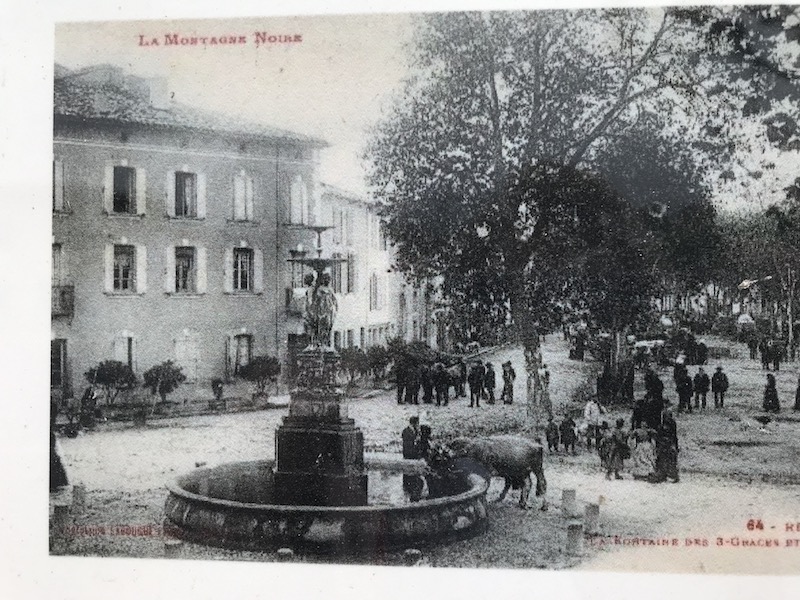
So this was just a funny little tile in the bathroom of the restaurant that we ate lunch in ... which translates loosely to "Pee happy, Pee glad, but pee inside".

Next stop in our little walk-around-town was a former distillery, which is now apartments. Revel is also known for a liquor, created here in 1796, called "Get 27 ". It is a mint-flavored liquor used as an apéritif or in cocktails. While its name refers to its original alcohol percentage, it currently has an alcohol content of 21%.
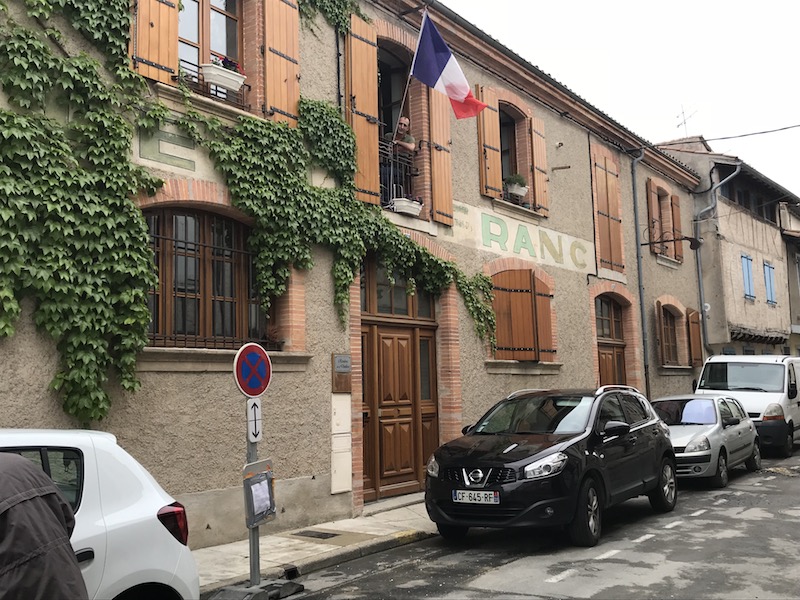
Around town, you can see various signs painted on the sides of buildings, or in some cases, built into the walls.

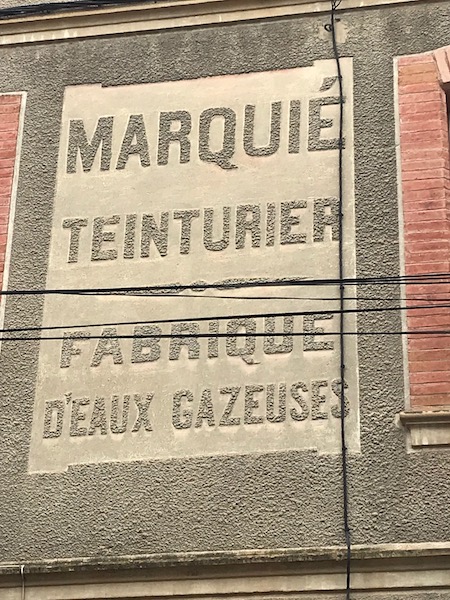
Fountains were used to supply water throughout the city in olden days. There are a couple of the 19th century fountains that no longer exist today, but there are still a few vestiges of them. This is one of them, found on the rue des Soeurs. Interesting note, the inscription says "L'île d'Elbe 1833". Elba (L'île d'Elbe) was where Napoleon was exiled, but he was dead before 1833. It seems like there was a French artist named Hippolyte Bellangé who made a lithograph in 1833 entitled "Military memories of the Republic, the Consulate and the Empire" which includes a plate showing Napoleon's return from the island of Elba. However, the inscription remains "unexplained", based on the tourist information.
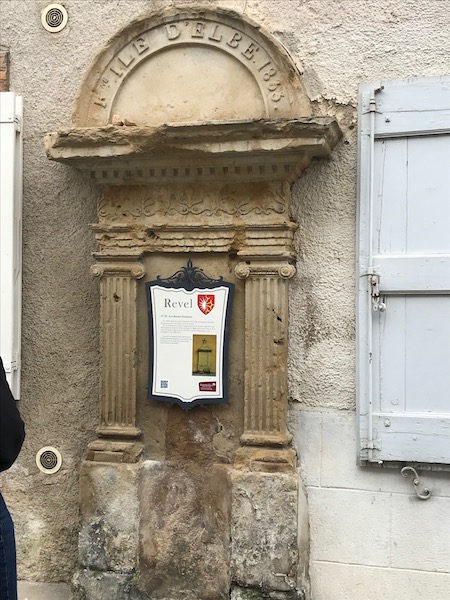
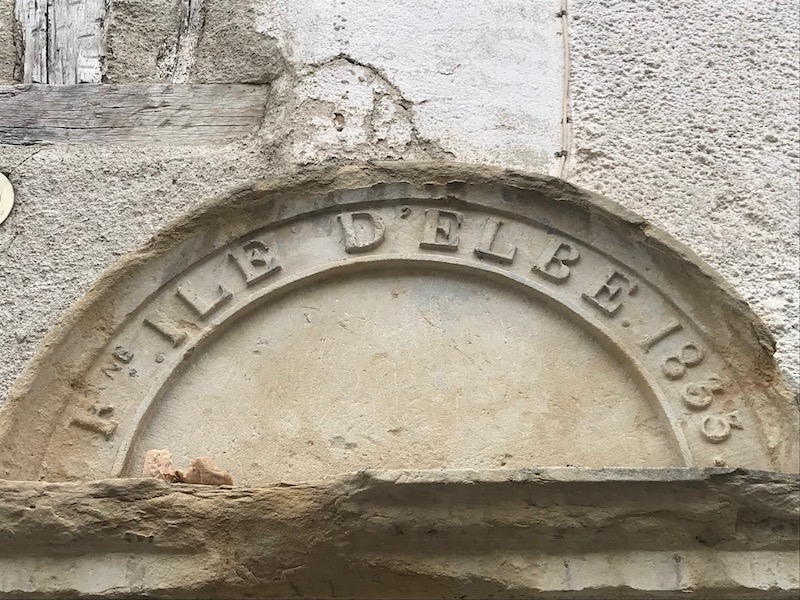
The Église Notre Dame Des Grâces, which was established in 1350 but destroyed several times in the 16th and 17th centuries during the Wars of Religion. The latest time, it was rebuilt in the nineteenth century in a neo-Byzantine style. In the middle, above the main door, are statues of (I believe) the 12 apostles and Christ.
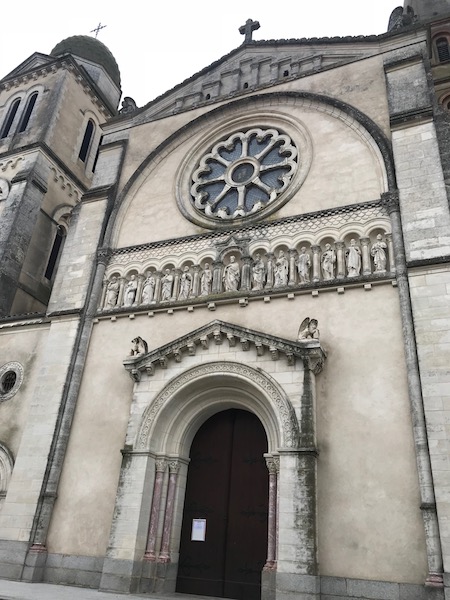



The interior is in great shape (probably because it isn't that old!) but not highly decorated. There is, of course, a monument to their dead from WW I and WW II. Interesting thing here is the specific categories for WW II, which includes those that died that were deported, as well as "combattants" (fighters) and "F.F.I", which stands for the French Forces of the Interior, who were the French resistance fighters in the later stages of World War II. The change in designation of these groups to FFI occurred as France's status changed from that of an occupied nation to one of a nation being liberated by the Allied armies. The last category, S.T.O, are the Service du Travail Obligatoire, which was the forced enlistment and deportation of hundreds of thousands of French workers to Nazi Germany to work as forced labour for the German war effort during World War II created under laws of the Vichy government.
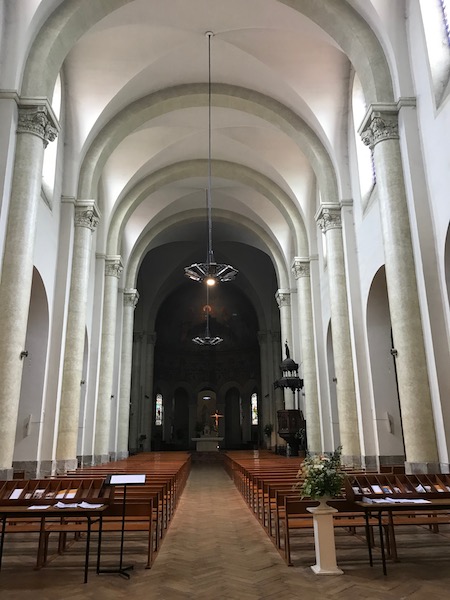

This little chapel is for Sainte Germaine, who was born in 1579 in Pibrac, which is a suburb of Toulouse. She was forced to live in a shed after her mother died and father remarried and so she persuaded her father to send her to keep watch over sheep in the fields. She went to mass daily and gave what little bread she had to the poor. Her father found her dead at the age of 22. She became a saint in the 19th century based on miracles both before and after her death. In the main miracle that she is known for, her stepmother accused her of stealing bread to give to the poor and she makes Germaine open her apron (supposedly to show the stolen bread). Germaine opens her apron but instead of break, roses come out. Here you can see the status and you can make out the flowers in her apron. Also, you can see the story told in the stained glass windows (Germaine on the left with the roses in the apron, and the mean stepmother on the right).


While the walls and most of the ceiling is pretty bare, there is a really nice mural in the cupola over the altar along with some nice stained glass (done by an artist from Toulouse in 1898).
